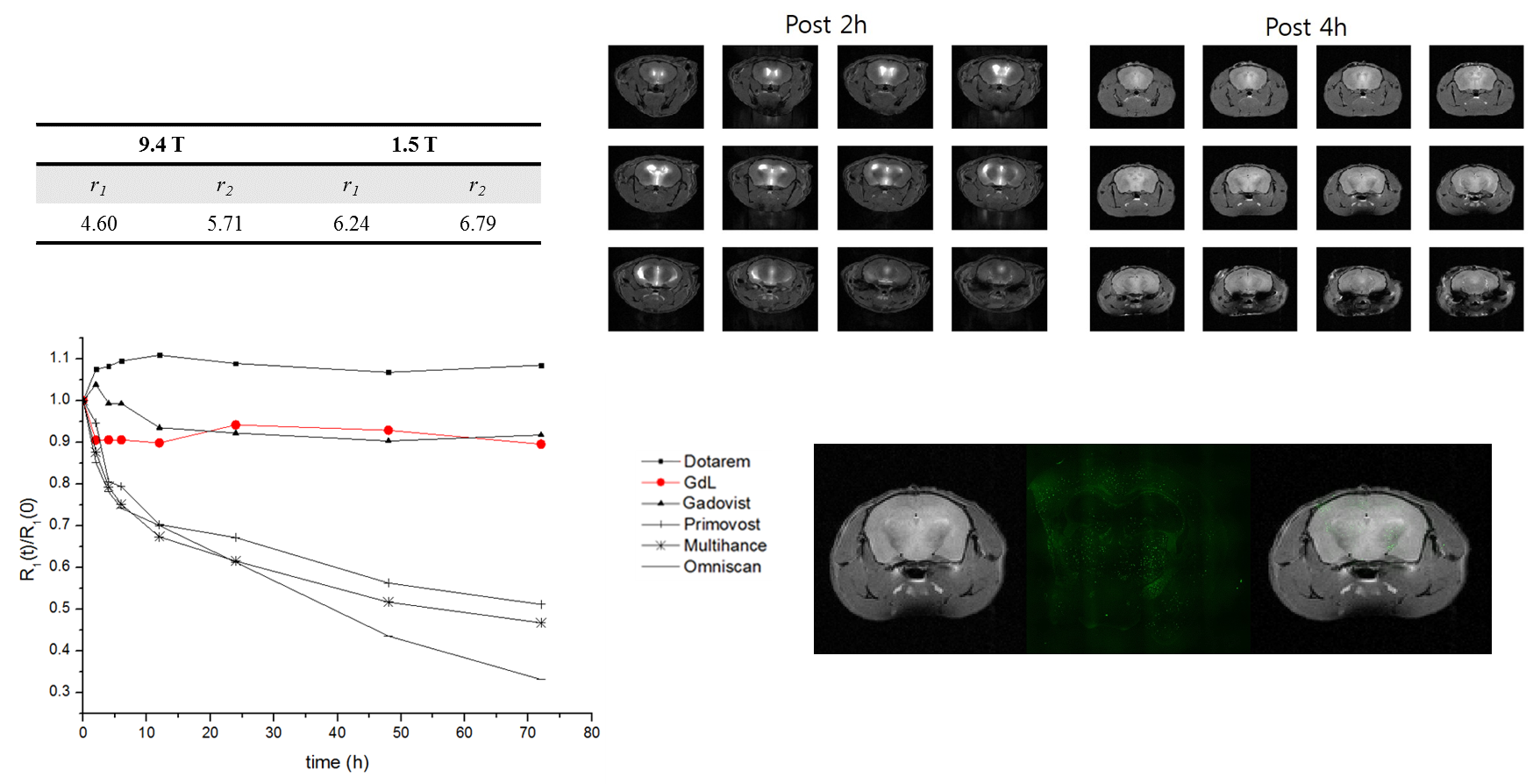|

|
| Type |
Poster Presentation |
| Area |
Medicinal Chemistry |
| Room No. |
Event Hall |
| Time |
4월 19일 (목요일) 11:00~12:30 |
| Code |
MEDI.P-601 |
| Subject |
A quest for beta-amyloid MR imaging with a new DO3A conjugated gadolinium complex |
| Authors |
Garam Choi, Soyeon Kim, Byeong Woo Yang, Seong hwan Hwang1, Hee-Kyung Kim2, Yeoun-Hee Kim3, Yongmin Chang4,*
Medical & Biological Engineering, Kyungpook National University, Korea
1Medical & Biology Engineering, Kyungpook National University, Korea
2Institute of Biomedical Engineering Research, Kyungpook National University, Korea
33Institute of Biomedical Engineering Research, Kyungpook National University, Korea
4Molecular Medicine, Kyungpook National University, Korea
|
| Abstract |
|
Introduction
We successfully synthesized a new gadolinium complex (GdL) for β-amyloid (Aβ) MR imaging. A probe could specifically bind to plaques and visualized them in MRI might make it a feasible early detection tool for Alzheimer’s disease (AD). GdL was evaluated as Aβ specific imaging probe with MR equipment.
Methods
All materials were purchased from commercial and used without additional treatment. The relaxivity study was carried out at 1.5 T (64MHz, GE Healthcare) and 9.4 T MR unit (400MHz, Bruker) in PBS (pH 7.4) condition. The transmetallation stability study was performed at 3.0 T MR unit (128MHz, Siemens) by measurement of the evolution of water proton longitudinal relaxation rate (R1p) under equimolar gadolinium complex and zinc chloride solution in PBS (pH 7.4). The in vivo MR study was carried out for AD model (5XFAD) by intracerebroventricular (icv) injection of GdL. T1- weighted image (9.4T) was compared with Aβ plaques fluorescence image stained by thioflavin T.
Result
GdL has high relaxivity values, r1 = 4.60, r2 = 5.71 mM-1s-1, even at high field, 9.4 T and r1 = 6.24, r2 = 6.79 mM-1s-1 at 1.5 T. Transmetallation study proved that GdL can tolerate dissociation from competitive environment with zinc chloride. ). R1pt/ R1p0 ratio retained approximately one that means there is no relaxivity decrease because of gadolinium chloride salt. In vivo images of AD model mice with GdL shows signal enhancement from lateral ventricle and it spread out to specific brain region. Fluorescence image proved that GdL enhanced the region of scattered Aβ plaques.
Conclusion
We successfully prepared a new MRI contrast agent for Aβ imaging. It is confirmed that GdL shows specificity to Aβ plaques and it was expected to use as an Aβ specific imaging probe. |

|
|
| E-mail |
garam1458@naver.com |
|
 121st General Meeting of the KCS
121st General Meeting of the KCS
 121st General Meeting of the KCS
121st General Meeting of the KCS